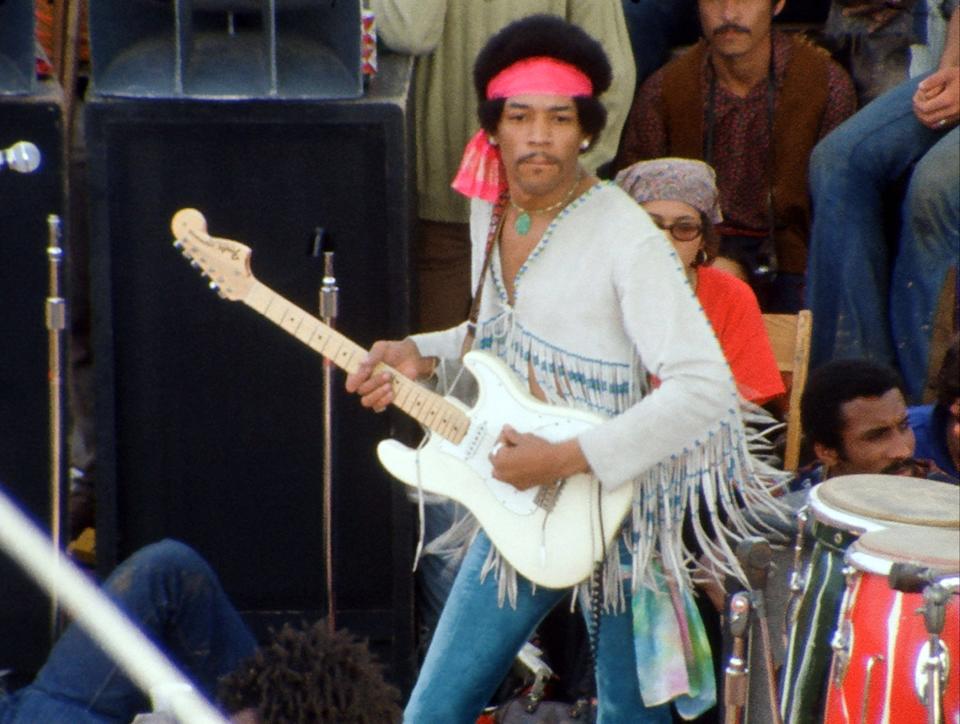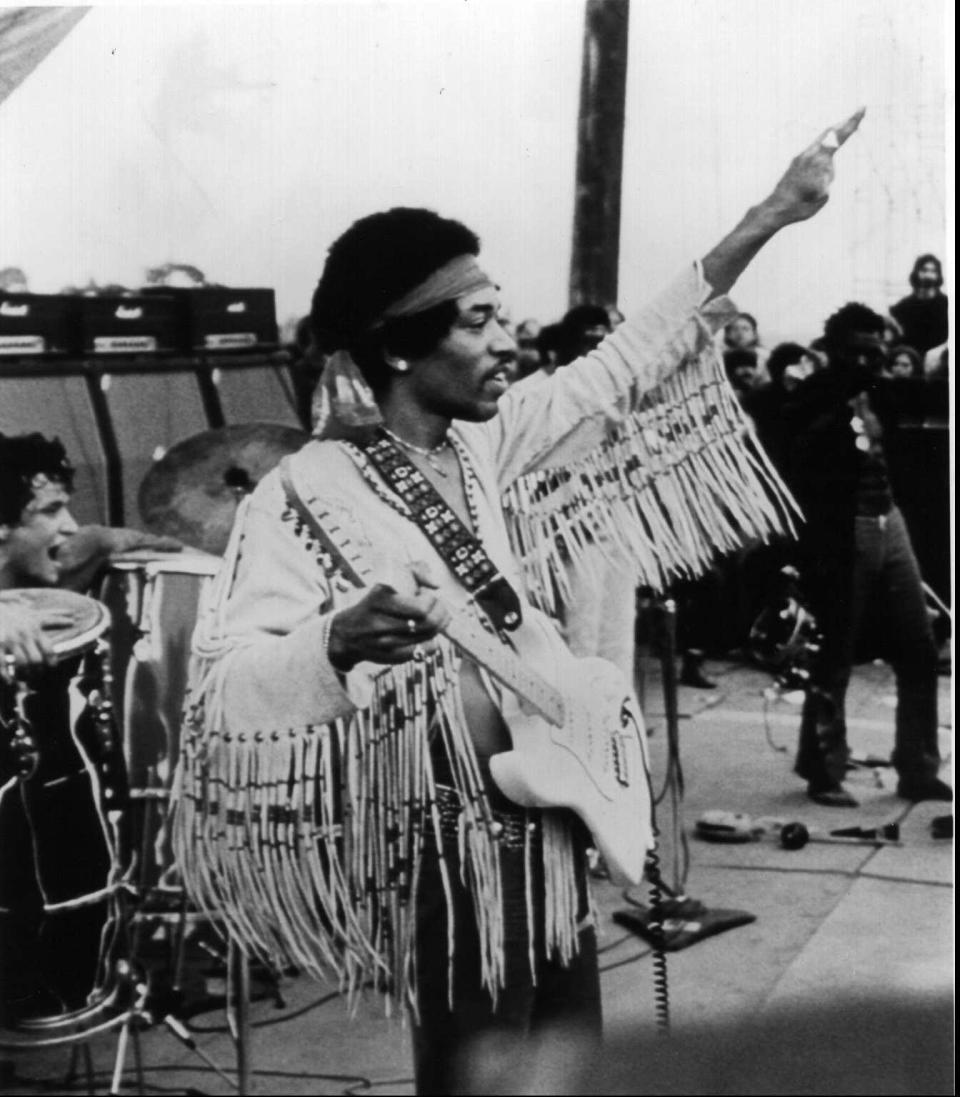50 years after Jimi Hendrix's death, his shocking 'Star-Spangled Banner' resonates more than ever
From Marvin Gaye to Whitney Houston, and Beyoncé to Lady Gaga, many of music's most indelible vocalists have lovingly taken on our national anthem.
Which is partly why Jimi Hendrix's seething, scorching and cacophonous rendition from Woodstock '69 stands out – and why 50 years after his tragic death on Sept. 18, 1970, it's still as haunting as ever.
"That was probably the most significant rendition of 'The Star-Spangled Banner' ever, in how it represented the spirit of the 1960s and where it was performed, the music festival most associated with that era," says Tacuma Roeback, a journalist who's written about Hendrix for Smithsonian magazine. "The sound of his guitar, the event, what he represented at the time as a Black man in America the year following the assassination of Martin Luther King, Jr. ... it all seems so poetic."
The performance was controversial, yet 'beautiful'
Hendrix performed at Woodstock in upstate New York on Aug. 18, 1969, exactly 13 months before he died of drug-related causes at age 27. Because of weather and technical delays, he and his band didn't take the stage until roughly 9 a.m., where they played a bluesy, freewheeling set of popular songs including "Fire," "Red House" and "Voodoo Child (Slight Return)" to a dwindling crowd.
But at the tail end of his nearly two-hour performance, which closed out the festival, he switched gears with a wordless, distortion-drenched "Star-Spangled Banner." Coming just before fan favorite "Purple Haze," the unnerving four-minute song was notable for the sounds he managed to create on his guitar: bombs dropping, people screaming, sirens blaring and fighter jets roaring.
"At a time when U.S. involvement in the war in Vietnam was still heavy, and there was a lot of social conflict within the country, it could have been viewed as an ambivalent and possibly subversive comment on what was happening in the larger world," says Richie Unterberger, author of "The Rough Guide to Jimi Hendrix" and "The Experience: Jimi Hendrix at Masons Yard." "Whether intentional or not, the anthem would have been interpreted by much of the youthful audience as a statement that Hendrix was with them in their unease over the country’s direction."
More: Listen to one of Jimi Hendrix's last songs with the Experience

Unterberger notes that Woodstock wasn't the first time Hendrix played this interpretation of the national anthem: After an April 19, 1969, performance in Houston, police unsuccessfully demanded the show be stopped, while other people made death threats against him. But Woodstock was by far the biggest stage he brought it to, and therefore caused more widespread controversy.
Appearing on "The Dick Cavett Show" a few weeks after the fest, Cavett asked Hendrix, an Army veteran, how he felt about the naysayers.
"When you mention the national anthem and talk about playing it in any unorthodox way, you immediately get a guaranteed percentage of hate mail from people who say, ‘How dare (you),'" Cavett said.
"That’s not unorthodox," Hendrix responded. "No, no. I thought it was beautiful."

Hendrix's Blackness was 'political in itself'
Fifty years on, as we approach a historic presidential election in a pandemic-riddled year, Hendrix's version "still sonically illustrates the confusion and rage many people feel about what’s happening in politics, racial and class injustice, violence committed by authorities, and climate change, with fires literally raging across much of the country," Unterberger says.
It 'should send a chill down everybody's spine': How hip hop is responding to George Floyd death
Hendrix himself wasn't as politically outspoken as many of his music peers, and some of his views would be considered conservative by today's standards. But it's important to remember that "as a Black artist operating in the way he was operating and existing in the world as he was, that was political in itself," says Wilbert Cooper, who's written about Hendrix for the Wall Street Journal. His sound was rooted in historically Black genres, and yet his bandmates and fans were multiracial. He also challenged conventional ideas around sexuality, psychedelic drugs and depression through his music and appearance.
"I don't think you could ever divorce and separate him from the representation he offered, because it's always connected to the counterculture and always about breaking down boundaries," Cooper says. So with his "Star-Spangled Banner," Hendrix was "taking something that has been looked at in one way and reinterpreting it.
"And that's part of what Black people do: This country wasn't necessarily made for us, but we've taken it and we've mixed it with our spirit. That's what he did with this song: He took it and he reinvented it and he made it better."
This article originally appeared on USA TODAY: Jimi Hendrix 50th anniversary death: Look back at his national anthem

